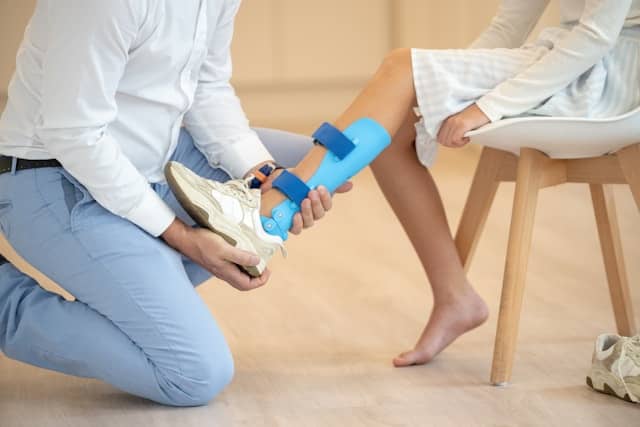
Flat feet, or fallen arches, can sometimes feel like a minor inconvenience. But for many, they lead to discomfort and even pain during daily activities. If you’ve ever felt that achy sensation after standing for too long or noticed your shoes wearing unevenly, you’re not alone. The good news? There are effective ways to manage flat feet and find relief. Professional orthotics have emerged as a popular solution among those seeking comfort and support. From custom-made insoles to over-the-counter options, these devices play a vital role in correcting foot alignment and improving overall mobility. Curious about how orthotics could transform your experience with flat feet? Let’s dive into the details of this supportive option and explore what works best for you.
Understanding Flat Feet and its Implications
Flat feet occur when the arches of the foot are lowered or absent, causing the entire sole to make contact with the ground. This condition can be present from birth or develop over time due to various factors like age, injury, or excessive weight. Many individuals with flat feet experience discomfort during physical activities. The lack of arch support can lead to misalignment in other areas of the body, such as knees and hips. This often results in pain that can affect daily tasks and overall quality of life.
How Orthotics Can Help With Flat Feet
Orthotics can be a game changer for those dealing with flat feet. These custom-designed inserts provide essential arch support, helping to distribute weight evenly across the foot. This alignment can alleviate discomfort and prevent further issues. Many people with flat feet experience pain in their arches or heels. Orthotics target these pain points by cushioning the affected areas and reducing strain on ligaments and tendons. Additionally, they help correct gait problems often associated with flat feet. By guiding your foot into a more neutral position, orthotics improve walking mechanics, leading to enhanced mobility.

Types of Orthotics for Flat Feet
Orthotics come in various types, each designed to cater to specific needs. Custom orthotics are tailored specifically for your feet. A podiatrist or specialist creates these based on detailed foot measurements. Over-the-counter options provide support and comfort as well. They come in different styles and shapes, making them accessible for many individuals with flat feet. Another option is functional orthotics. These are designed to correct misalignment, providing stability during movement.
Benefits of Using Orthotics for Flat Feet
Orthotics can significantly improve the quality of life for individuals with flat feet. These custom or over-the-counter devices provide essential arch support, which helps maintain proper foot alignment. By redistributing pressure across the foot, orthotics alleviate discomfort and reduce fatigue during daily activities. Many users report less pain in their heels and arches after using these supports. Additionally, orthotics enhance stability and balance. This improved posture not only benefits walking but also enhances performance in sports and other physical activities.
Factors to Consider When Choosing the Best Orthotics for Flat Feet
Choosing the right orthotics for flat feet can be a game-changer. Comfort should always be your priority. Look for options that fit snugly without causing pressure points. Material is another key factor. Some people prefer softer, cushioned materials, while others benefit from firmer support. Know what feels best for you. Consider the type of activities you’ll engage in when selecting orthotics. If you’re an athlete, performance-focused designs may be essential to provide stability and shock absorption. Consulting with a healthcare professional can also guide you toward the most suitable option based on your specific needs and foot structure. Each individual’s requirements vary widely, making this step crucial.
Other Ways to Manage Flat Feet
Managing flat feet involves more than just orthotics. Strengthening exercises can play a vital role. Targeting the muscles in your feet and lower legs helps improve stability and support. Stretching is equally important. Tight calf muscles often contribute to discomfort. Regularly stretching these muscles can alleviate tension and enhance flexibility. Footwear choices matter too. Look for shoes with arch support, cushioning, and proper fit. Avoid high heels or overly worn-out footwear that lacks structure.
In Conclusion
Managing flat feet can be a challenging journey, but the right approach makes all the difference. Orthotics provide valuable support and comfort for those with this condition. They help to alleviate pain and improve overall foot function. Choosing the right orthotic is crucial. It should cater to your specific needs while considering factors like arch type, activity level, and shoe compatibility. Personalized solutions often yield the best results.
